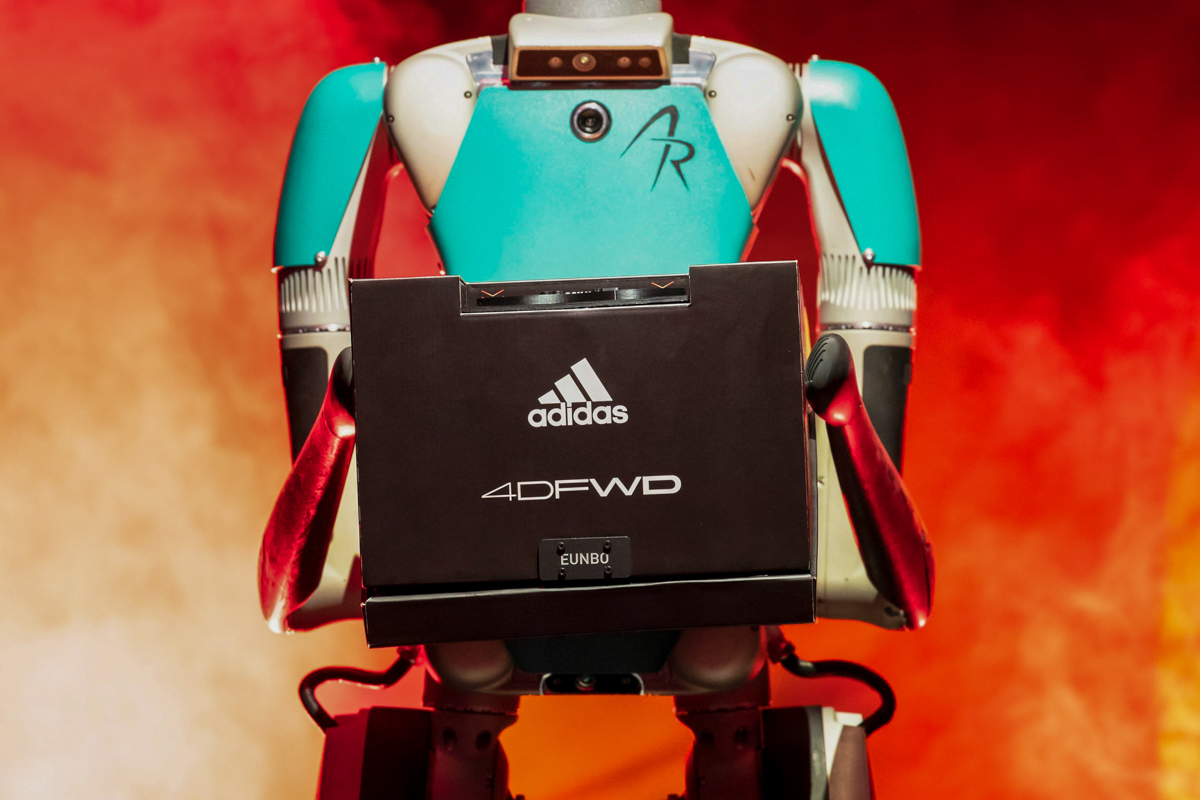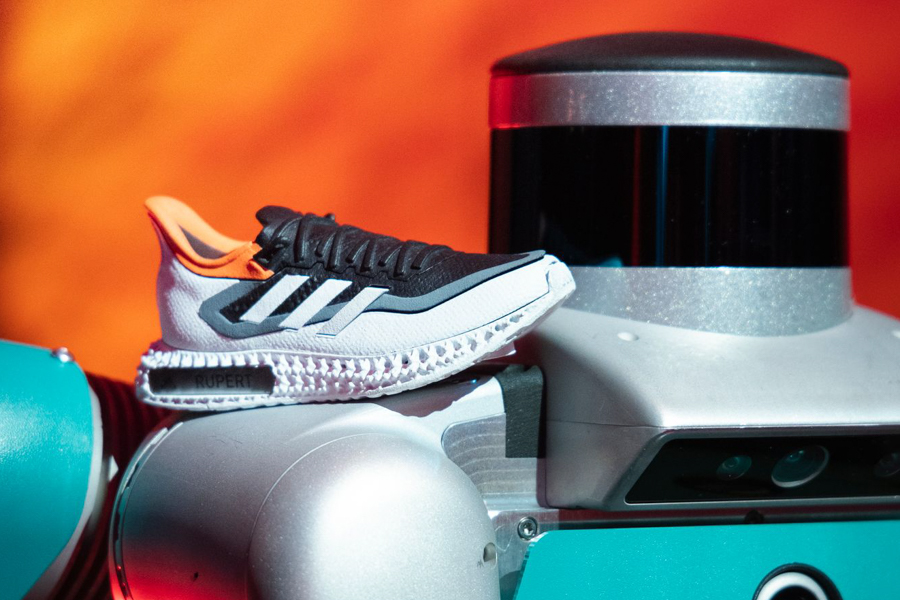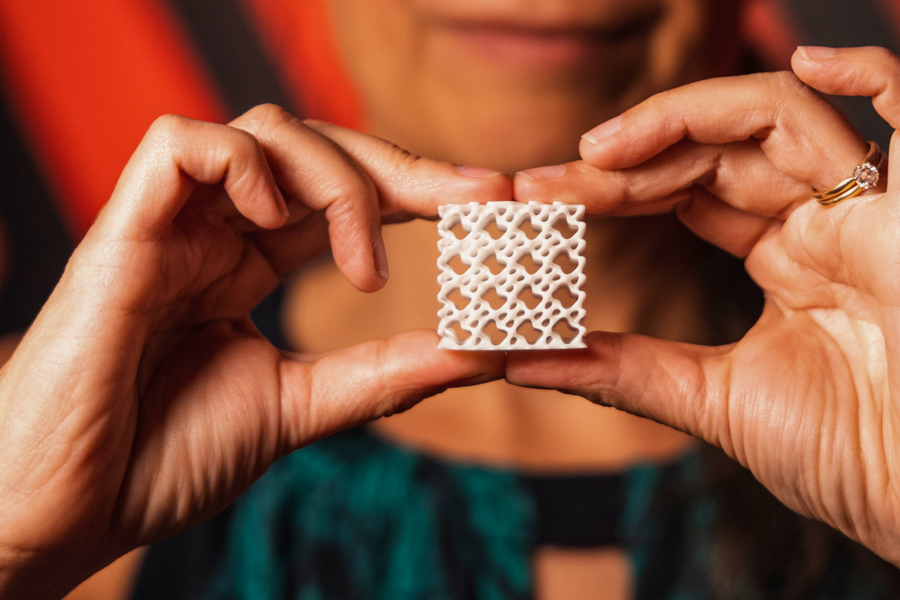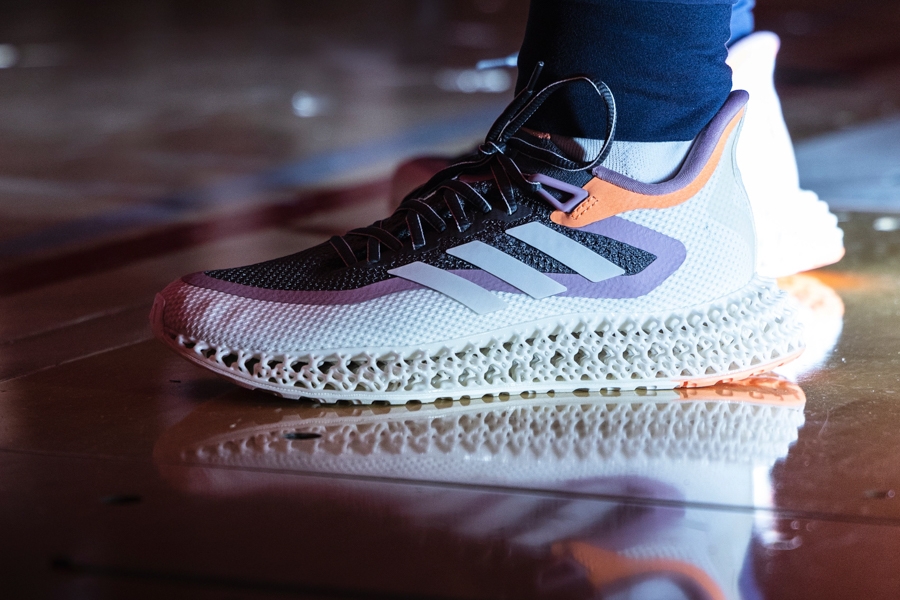
We all have runs where it feels like we’re stuck moving in place despite every step we take. Luckily, Adidas seems to have come up with the solution to tackle this running nightmare — the Adidas 4DFWD. Designed specifically to move runners forward, this shoe provides a non-stop, smooth forward transition with every step.
This past week we traveled up to the infamous Portland, Oregon, to get a better introduction to the Adidas team as they lead us forward into the future of running. Although we didn’t find bigfoot while there, we learned a lot about the updated Adidas 4DFWD line and the possibilities presented by Carbon’s 3D-printing technology.
During the trip, we spoke with Charlotte Heidmann, Senior Product Manager, Adidas Running, and Jason Rolland, SVP of Materials at Carbon 3D, about the newly improved 4DFWD and the tech behind the shoe.
We also heard from Keith Blume, Senior Manager, Adidas Footwear Innovation, Bill Wannop, Adjunct Assistant Professor in the Biomechanics Research Center at the University of Calgary, and Peko Hosoi, Professor of Mechanical Engineering at Massachusetts Institute of Technology, during our time at HQ.
Before the 4DFWD became the shoe we see today, the Adidas team first had to determine if creating forward motion in a shoe was even possible. The Adidas Athlete Science Team posed the question: can we create a product that propels runners forward? Members of the innovation team created the first prototypes by hand-cutting pieces of foam out of an Ultraboost midsole to test this idea. Keith Blume noted that this was “an attempt to create forward motion in a crude way, to see if this was even a feasible question for Adidas to tackle.”
Fast-forward a few years, and here we are with the newly-updated Adidas 4DFWD. We spoke with Charlotte Heidmann to hear more about her experience working on the project.

BITR: We’re intrigued by the idea of a consumer-facing product that utilizes 3D printing technology. We often see these resources used in the development phase to produce quick prototypes of a shoe. What led the team at Adidas to reexamine 3D printing tech with the new 4DFWD?
Charlotte: Designed to move runners in one direction only — forward — the shoe’s industry-first bowtie-shaped lattice midsole transforms vertical pressure into a horizontal force, providing runners with a non-stop, smooth forward transition. This remains the same as the first iteration of the 4DFWD. However, with the new 4DFWD, we have introduced several new features, including a Continental outsole which provides extra grip for a confident run in any weather condition, and an all-new Primeknit+ and engineered mesh upper construction has been introduced for an extra-supportive and snug fit.
BITR: What’s it like to see, hold, and test the finalized 4DFWD after going through the design process?
Charlotte: I’ve been running in the new shoes. Our updates feel great on foot, just as we hoped. At Adidas, we’re always looking at how technology and data intersect to create the impossible for our runners. With the new 4DFWD, you can really feel the forward motion benefit when you run in these shoes. What I also enjoy is the first step into the shoe, as we have finally achieved a fit that feels more supportive and makes you want to start running. It feels so rewarding and a proud moment for me and the wider team to bring these shoes to life.
What you need to know about 3D printing: The 4DFWD’s 3D-printed midsole is easily the most intriguing part of the shoe. The bowtie-shaped lattice structure is essential in achieving the goal of converting vertical forces into forward motion. Additionally, 3D printing is typically very time-consuming, making the large-scale release of the 4DFWD much more interesting.
Jason Rolland, SVP of Materials at Carbon 3D, helped break down what it was like to partner with Adidas and provided a closer look into the 3D-printing process.
BITR: We’d love to hear from you about your experience navigating this collaboration with Adidas and how it came to be.
Jason: We first met the Adidas team at the AMUG conference in 2016 (Additive Manufacturing User Group). We were impressed with their ambitious vision for 3D printing and footwear. Adidas also had a track record of taking big bets on new technologies, which was very appealing. They tried previously to make midsole components using other 3D printing technologies, but durability remained a major issue.
From the Carbon side, we had the beginnings of a new and exciting approach to both printing and materials that we felt could overcome these challenges. We also knew there was likely a big market in footwear, so choosing the right partner was key. It’s been a tremendous partnership over the past 6+ years. Working with Adidas towards this goal drove so much innovation in materials, printers, part cleaning, printing accuracy at high speeds, factory build-outs, etc. We were also very impressed with Adidas’ commitment to sustainability and its track record with products like Parley (in collaboration with Parley for the Oceans).
BITR: How were Adidas and Carbon 3D able to collaborate during the design process? Can you give us insight into how you combined teams, data, etc., to work together on the 4DFWD?
Jason: The two teams collaborated very closely during the development of the second generation material, EPU44, which is used in the 4DFWD products. The material needed to pass all the requirements for durability, UV stability, compression profile, cost, and many other attributes. We rely heavily on Adidas’s testing capabilities, particularly around durability, so this requires very close collaboration. The other tricky part was co-developing the material along with the new design. We had to make sure that the material could accurately print these amazing new geometries at production-relevant speeds while also maintaining a high bar for performance.
Fortunately, a very close and effective partnership between the two teams made this possible. This also highlights the benefits of 3D printing during development and validation — geometries and designs can be rapidly iterated and tested. This is not possible with traditional manufacturing methods like foam molding. Without the ability to rapidly iterate and test, I don’t think we could have moved nearly as quickly during product development.
Carbon’s 3D-printing technology is an essential component of the design process, as new variations of lattice structures are quickly printable. Now, midsoles can be printed in as little as 30 minutes.

BITR: The carbon lattice design of Adidas’ 4DFWD technology is revolutionary in its ability to target specific functional zones. Would you be able to elaborate on how different lattice patterns can impact the feel of the shoe underfoot?
Jason: We should caveat that Adidas, not Carbon, developed the forward displacement lattice for the 4DFWD product. Lattices provide a very distinct advantage in being able to easily control the cushioning profile in different regions of the part. With foams, you get a uniform compression profile across the entire part because the cushioning is generated from the micropores of the foam. If you want different compression, you need to change the foam’s chemistry. With digitally produced lattices, one has complete control over a wide range of compression values just by changing the geometry or density of the lattice in certain zones. Softer regions might have a less dense lattice structure, and stiffer regions requiring more support would have a more dense lattice structure. This is all done using the same material. It offers a fascinating new capability to product designers. Lattices also open up exciting features like the forward displacement geometries that translate vertical force into forward motion.
BITR: During our time at the innovation lab at Adidas HQ, we got a behind-the-scenes look at more of the lattice prototypes used during testing. With an array of different colors and lattice designs, we were curious as to how changing the color of the midsole can impact Carbon’s Digital Light Synthesis 3D-printing process.
Jason: Liquid and light interact during the 3D printing of the midsole. Because each color of material bends light differently, we have to adjust for this when trying to introduce a new colorway. At the end of the printing process, each colorway is physically the same product, but adjustments have to be made along the way to get to this point.
BITR: How will this partnership continue to shift the running shoe industry?
Jason: I think the partnership between Adidas and Carbon is an exemplary model for how large brands can partner with small companies to harness new technologies. This is not easy, but with the right mix of people, technology, and clear vision, it’s possible to create industry-changing new products.
BITR: Adidas has been incredibly conscious of the environmental impact of the product they release. How was sustainability prioritized during the development of the 4DFWD, particularly with the need to 3D print many iterations of the midsole during the design process?
Charlotte: We are rethinking the standard materials we use, expanding our portfolio to include recycled and natural materials, and exploring new material innovations. As part of Adidas’ commitment to helping end plastic waste, this midsole is made with 40% plant-based content derived from corn. As well as this, printing with 3D technology also means less waste.
Jason: The new Carbon EPU44 that you see in this updated version of the 4DFWD allowed us to lighten up the midsole, effectively creating less waste. Additionally, Carbon has developed a solvent-free cleaning process that helps eliminate extra resin during the midsole-printing process.

BITR: Innovation is a characteristic of our industry that has a vital role in shaping the sport. What can we expect to see concerning future products and the utilization of the 4D midsole technology? Will we see 3D printing cross over into other existing Adidas product lines (i.e., Ultraboost, Supernova, etc.), or will it remain its own concept?
Charlotte: Currently, 4D midsole technology is predominantly utilized throughout our 4DFWD range. But the same 4D midsole has already crossed paths with Ultraboost. Adidas combined the benefits of both shoes to produce multiple iterations of the Adidas Ultra 4D. As we continue to redefine and challenge how running footwear is perceived, 4D technology will proceed to evolve alongside our running franchises to deliver an outstanding performance experience.
BITR: What insights can you give us into future projects you’re working on right now? What can we expect to see from Adidas in the future?
Charlotte: We’ve constantly got our fingers on the pulse, looking at ways we can tap into the latest technology and data to produce the best possible products for our runners. While I can’t speak about future projects right now, I would say that the future is extremely exciting.
Keith Blume, Senior Manager, Adidas Footwear Innovation, left us with a parting thought: “Forward motion is just the beginning of examining what new structures could do under foot in performance environments.” The collaborative efforts of Adidas and Carbon 3D on the new 4DFWD have certainly opened the door for the future of running product design.
The Adidas 4DFWD will retail for $200 starting September 1. You can step into the future of footwear by picking up a pair at the link below.
Shop Adidas 4DFWD 2 – Men Shop Adidas 4DFWD 2 – WomenHave something to say? Leave a Comment